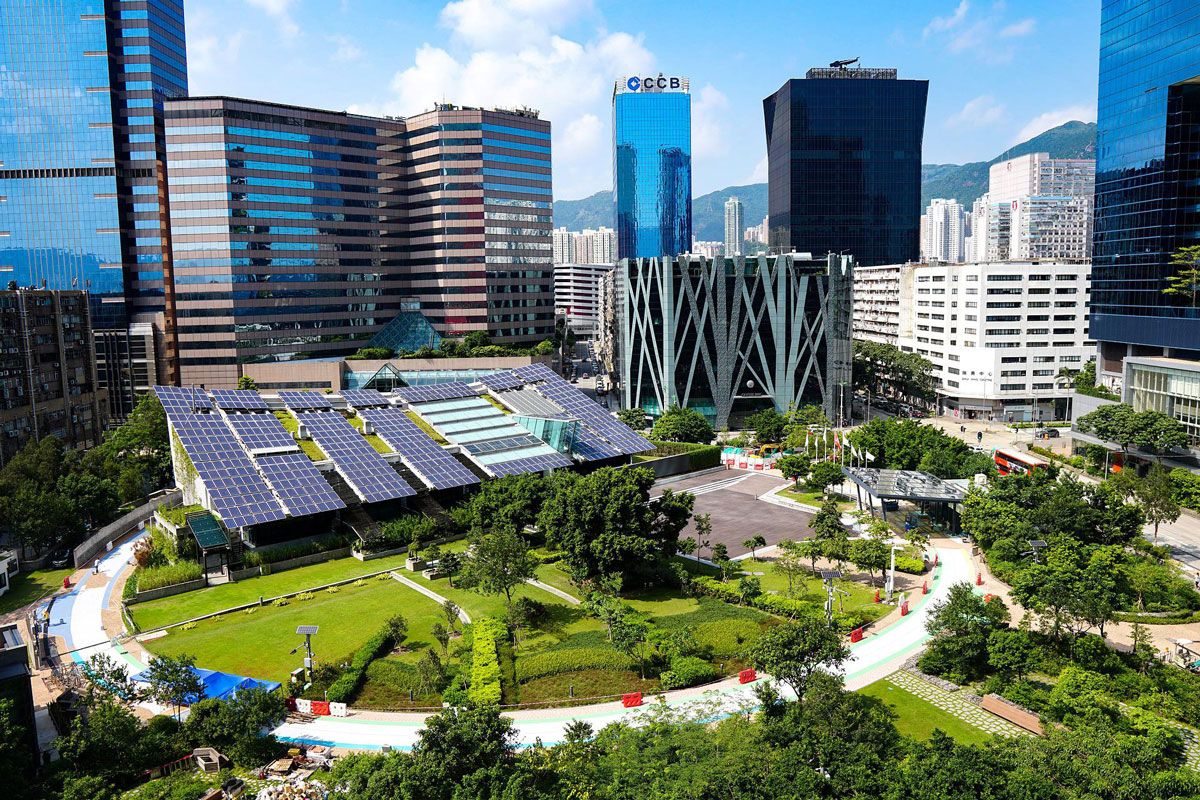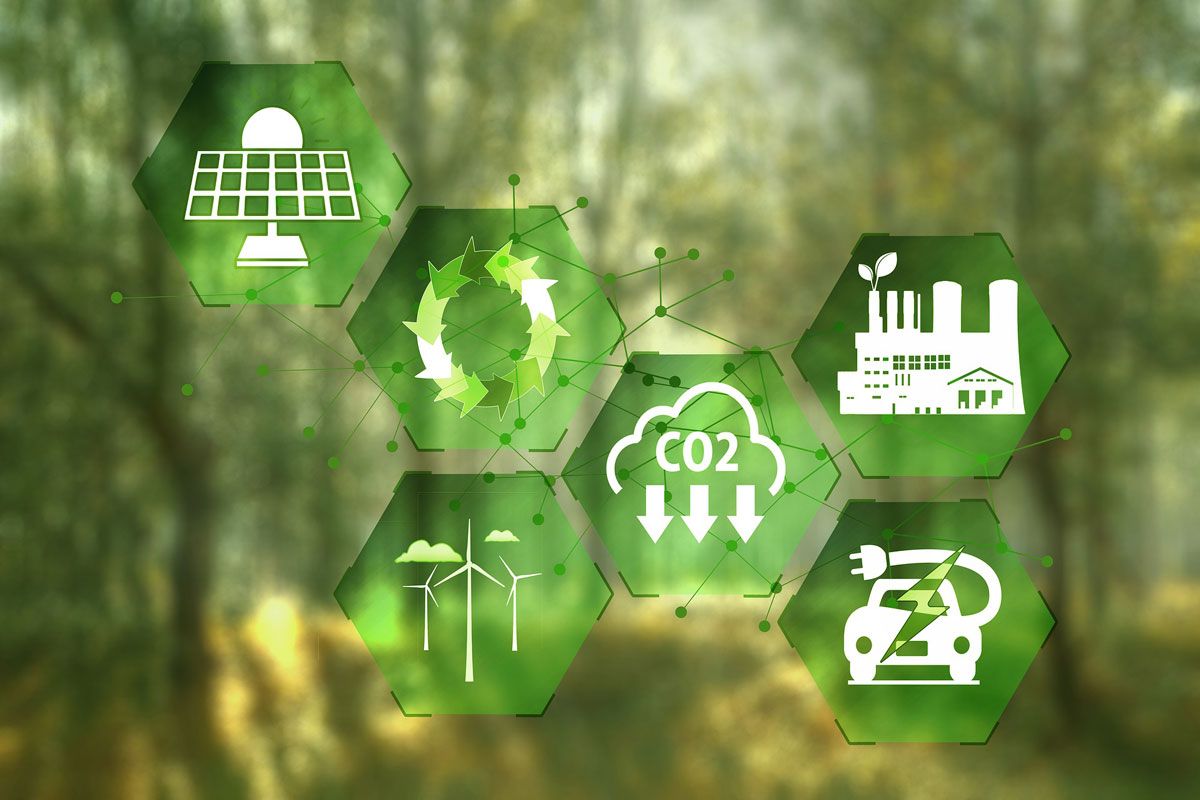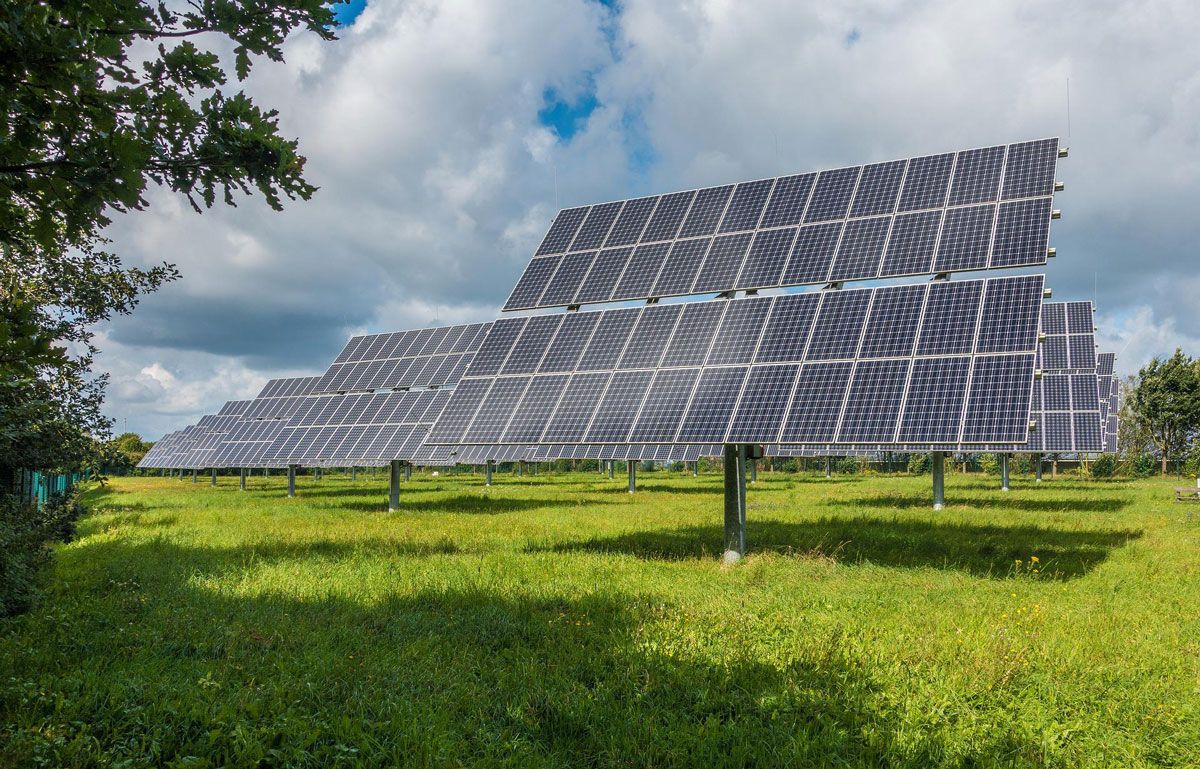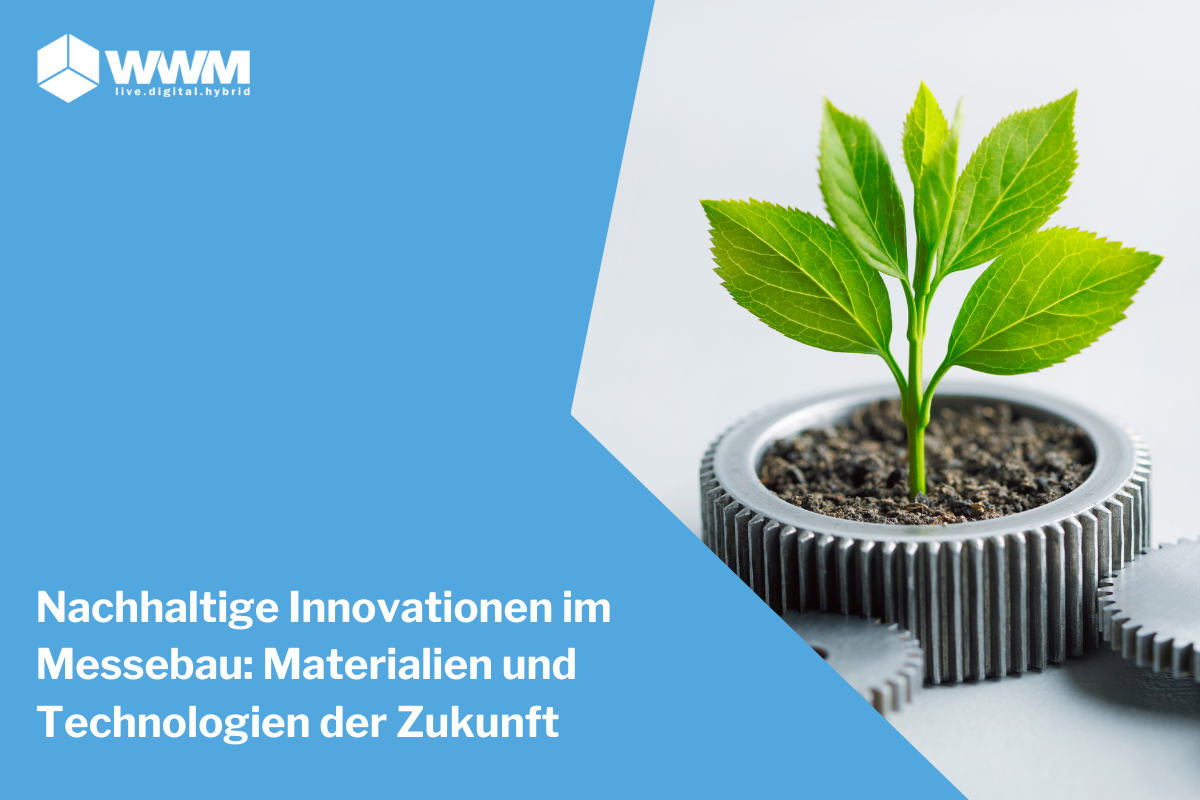Recognising sustainable companies in the event industry
In a world characterised by constant change and progress, the topic of sustainability is becoming increasingly important and is therefore now a top...

The costs of environmental change should not be underestimated. Regulations often force companies to invest in new technologies, services and business models, and in April 2022, the EU Commission published a draft amendment to the CSR Directive that could require companies to submit comprehensive sustainability reports as early as 2023. In addition, more and more large companies are requiring CSR reports on their supply chains. If there are gaps in sustainability, suppliers will have to rectify them or, even worse, lose orders. If you want to survive on the market, there is no getting around the issue of sustainability. The goal is clear: more transparency in sustainability issues.
Companies in Europe will not survive in the medium term if they do not see the prevention of global warming as an opportunity and do not create a competitive advantage for themselves. The European Climate Law sets out the goal formulated in the European Green Deal that
Europe's economy and society to become climate-neutral by 2050.
The law also sets the interim target of reducing net greenhouse gas emissions by at least 55% by 2030 compared to 1990 levels. The law aims to ensure that all EU policies contribute to this goal and that all sectors of the economy and society play their part. Progress will be reviewed every five years in line with the global stocktake under the Paris Agreement.
By amending the Federal Climate Protection Act, the German government is already aligning Germany's climate protection targets with the EU's higher targets:
With the 2022 immediate action program, the German government wants to provide additional support for the implementation of the new climate protection targets in all sectors.
In order to achieve the climate targets, industry must not cause any additionalCO2 emissions in future. This requires more renewable energy sources, hydrogen technology, greater energy and resource efficiency and new production processes.

The diversity of industry, trade, commerce and services is the basis for economic strength and prosperity. The future-oriented framework conditions should strengthen this diversity and create a competitive SME sector.
Germany as a business location also needs a regulatory framework in the future to ensure its competitiveness. In order to ensure the protection of global environmental assets such as the climate and biodiversity, the German and international regulatory framework must be further developed from the ground up. For this reason, political initiatives at national, European and international level are examined to determine whether they are targeted, effective, proportionate and sustainable. The goal is an evidence-based economic policy that uses the available information to develop the best measures based on these criteria.
A thriving economy needs a dynamic entrepreneurial spirit.
SMEs are drivers of innovation and, with the imminent transition to climate neutrality, offer great opportunities for competitiveness and value creation, especially in the medium and long term.
Since 2005, one of the central elements of EU climate policy has been European emissions trading. It creates a price for every tonne of CO2 emitted by industry, energy companies and intra-European air traffic. Emissions trading creates incentives to use less fossil fuels. The upper limits for emissions are lowered every year. For example, emissions from electricity generation and energy-intensive industries have been reduced by 42.8 percent over the last 16 years.
The second key element is the EU Effort Sharing Regulation. It assigns CO2 reduction targets to the EU member states for the areas of transport, buildings, agriculture, waste management and small businesses. The EU Commission's “Fit for 55” proposals envisage even stricter reduction targets for the future. Countries that do not meet the targets will have to buy surplus emission allocations - i.e. greenhouse gas emission rights - from other EU member states.
In order to achieve the climate targets, industry must not cause any additional CO² emissions in the future. This requires more renewable energies, hydrogen technologies, greater energy and resource efficiency and new production processes.

Germany is becoming a center for battery research, production and recycling and a location for the global semiconductor industry. Industrial change is being incorporated into the development of Europe as a whole as part of the European Green Deal.
Diversity in industry, trade, commerce and services is the basis for economic strength and prosperity. Forward-looking framework conditions should strengthen this diversity and build a competitive middle class.
Germany must become climate-neutral by 2045, but it must act much earlier than that. The climate protection measures taken so far are not enough. This is particularly important in view of the war in Ukraine and the associated rise in energy prices and potential supply disruptions.

With the legislative package adopted on 6 April, the German government has created a framework for faster expansion by regulating tendering volumes, simplifying planning and approval procedures, increasing the solar premium and involving non-governmental organizations and municipalities more closely.
The German government also supports the European Commission's “Fit for 55” climate package, which provides for a reform of EU emissions trading and relies on higher CO2 prices as a key incentive for more climate protection. This process is closely linked to a strong social balance.
To this end, the EU Commission presented the “Fit for 55” package in July 2021, which contains more than a dozen proposals for legislative changes. These include, for example:
a new EU emissions trading scheme for transport and construction from 2026,
stricter CO² limits for cars and light commercial vehicles and a CO2
-limit tax on imported goods.
The European expansion target for renewable energies will be increased to 40% by 2030. The social fund to combat climate change is intended to ease the burden on citizens and make the measures socially fair.
The European Commission has identified the “Green Deal” as a political strategy for climate protection in the European Union: The goal of becoming greenhouse gas neutral by 2050 is enshrined in EU climate legislation. The measures to achieve this goal have not yet been defined.
Politicians have defined the criteria for climate-neutral standards, but mandatory actions by companies to achieve climate neutrality have not yet been defined. Innovative companies see sustainability and climate neutrality as a great opportunity for competitive advantage.
Intrinsic and value-based: the company is committed and wants to make its contribution to preserving the world and humanity. These companies anchor sustainability and ecology in their corporate vision:
Reflection: what strengths can the company utilize?
Strategies: What steps are individually necessary and how can the company implement them?
Marketing effects: A license model with user-friendly solutions for the independent accounting of a company forms the basis for sustainability reporting. Continuous mentoring of the footprint records the success of the climate protection commitment. Content management in marketing creates awareness on the market. Consumers want sustainable products and services.
Optimized processes along the value chain: Through sustainable process optimization and definition, the entire value chain is put to the test and optimized for efficiency.
Reporting obligations: In future, large companies in particular will be required to provide evidence of a clean ecological balance sheet. (CSR Directive) This will create more transparency on sustainability.
Suppliers: If you want to survive on the market, you cannot avoid dealing with climate protection. In future, suppliers will be assessed according to the extent to which they have addressed climate neutrality and can provide evidence of corresponding savings.
EU Taxonomy Regulation: Classification of economic activities with the aim of creating a uniform understanding of the term “sustainability” in the EU. The EU Taxonomy Regulation affects all providers of financial market products (banks), as well as all companies that are obliged to publish a non-financial statement. The Taxonomy Regulation results in new reporting obligations for companies: If a company participates in the financing of sustainable activities, this should be noticed by financial market players. The aim is to increase transparency with regard to sustainable activities and prevent greenwashing. This should lead to more investment in the company.
Raising money on the capital market: investors and banks are interested in
to channel capital flows into sustainable investments,
Sustainability is included in risk management,
Promote transparency and long-termism in financial and economic activities. A company's sustainable and ecological orientation therefore has an impact on the costs and creditworthiness when raising outside capital.
What can a medium-sized company do to protect the climate?
Generating 100% of electricity from renewable energies with photovoltaic systems: saving 9.4 tons of CO2 annually.
WWM vehicle fleet 100% electric

Supplier chain checked for sustainability
MeistroEnergy certificate

We believe that health, balance and joie de vivre are part of a balanced self. In our eyes, this requires harmony with our ecological and social environment. The physical and mental health of our employees is important to us. That is why we strive for a sustainable approach to our fellow human beings as well as to our natural resources. Find out more about our corporate social responsibility here.
How can a medium-sized live communication company offer sustainable solutions for its customers as part of the sustainable value chain?
Using modular structures for exhibition stand construction: these innovative exhibition systems can be reused and returned to the material cycle or recycled while maximizing design individuality:
Graphics
Individually branded but reusable rental furniture
Floor structures
Substructures and other components
Resource-saving logistics, assembly/disassembly, transportation
Electricity reduction through LED lighting
Expand efficient and clear process structures and core competencies: No special solutions where core competencies are lacking.
Smart selection of touchpoints on the customer journey: Play out virtual, hybrid or physical events, trade fairs and congresses in a targeted manner, including from an ecological perspective.
You can read more tips in our blog article: 5 tips for sustainable trade fair construction.
Europe's opportunity lies in adopting an ecologically sustainable approach and exploiting a global competitive advantage.
European companies are being forced to act ecologically by political objectives.
Every company can and must do its part to ensure that the environmental goals set are achieved.
The opportunity for companies lies in the sustainable value chain.

In a world characterised by constant change and progress, the topic of sustainability is becoming increasingly important and is therefore now a top...

Flexibility for every occasion The trade fair industry has changed dramatically in recent years, and not without reason. Companies are faced with the...

Sustainable solutions are becoming increasingly important in modern trade fair construction. Companies, exhibitors and organizers are increasingly...